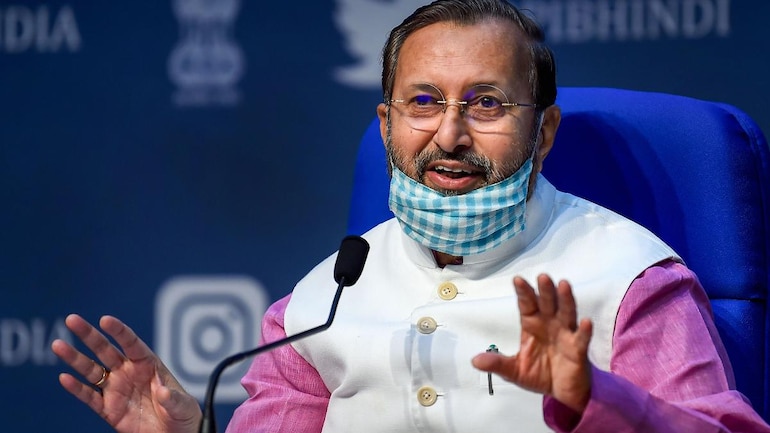Approved by The Union Cabinet it aims at changing some major patterns of India’s education system right from school to college level. Multiple changes have been approved including single regulator for higher educational institutions, multiple entry and exit, discontinuation of M.Phil programs, the common entrance exam for all Universities to name a few.

The Union Cabinet has also approved the decision of renaming The Ministry of Human Resource Development to the Ministry of Education.
Union minister Prakash Javadekar said the changes are important as the policy, which was framed in 1986 and revised in 1992, had not been revised since then.
Evident changes have been made bringing about major transformations in the system of education. Some policies are revised on the other hand some new policies have been introduced.
Here are the main highlights of the National Education Policy 2020 of India.
-
From class 1 to 5 the medium of instruction for the students will be either in mother tongue or in regional languages.
-
School curriculum is decided to be reduced to core concepts along with the integration of vocational education from class 6 onwards.
-
50% of learners through the school and higher education system shall be provided with the exposure of vocational education.
-
Early childhood care and education will be provided in Kendriya Vidyalayas around the nation especially in disadvantaged areas as a part of preschools.
-
The state government may open NCC wings in their secondary and higher secondary schools, along with those located in tribal-dominated areas.
-
Internship opportunities will be provided to the students from class 6-12 in the holiday period.
-
Report card of students will not highlight only marks and statements but also the skills and capabilities of the students.
-
The national mission will be centred around basic literacy and basic numeracy.
-
E-courses are supposed to be developed in Regional languages for students.
-
Library spaces for adult education courses which will be ICT-equipped. National Education Technology Forum (NETF) will be created.
-
The new pattern of education will be more holistic and multidisciplinary in its approach.
-
There will be no rigid separation between streams and the separation between vocational and academic and curricular and extra-curricular will be removed.
-
The Board exams will test actual knowledge of students and not rote learning.
-
Sanskrit will be an important part till a higher level of schooling including it as an option in three language formula.
-
Free entry in Jawahar Navodaya Vidyalaya for students coming from a socio-economically disadvantaged background.
-
Fees charged by educational institutions will be capped.
-
Graduate, Postgraduate and PhD programme will be multi-disciplinary.
-
For Bachelor’s degree, there is multiple entries and exit options so that students can study for 1 year 2 years, 3 years with 4th year adding to a research degree and in case of diploma, the student will be offered diploma for 1 year education or advanced diploma for 2 years education.
-
Master’s will remain a two-year degree where in the second-year student will enter research who have completed 3 years undergraduate. For those who would complete 4 years of undergraduate with research there would be an option of a one-year master degree for them.
-
M.Phil will be discontinued as students will be able to pursue PhD after masters.
-
By 2030, 4-years integrated B.Ed degree will be the minimum qualification for teaching.
-
NIOS is supposed to develop high-quality modules to teach sign languages and basic subjects using Indian sign languages.
-
State and districts will be encouraged to open Baal Bhavans as a special day time boarding school providing students with the opportunity to participate in creative art, career and play-related activities.
-
Children with disabilities will be able to participate in regular schooling with the help of skilled educators and tools and mechanism suited for their special needs.
-
Higher Education Institution will be governed by a single authority. Common entrance exams will be conducted for admission in universities.
-
All higher education institutions, apart from legal and medical colleges, will be governed by a single regulator
-
PARAKH a National Assessment Center has been created to assess the students.
-
The education sector is supposed to get 6% of GDP which was 1.7% earlier.
-
“NEP 2020 aims to increase the Gross Enrolment Ratio in higher education including vocational education from 26.3% (2018) to 50% by 2035. At least 3.5 crore new seats will be added to higher education institutions” HRD higher education secretary Amit Khare said.
@BJP reducing Parliament from RubberStamp to NoStamp
How is something as vital as comprehensive new education policy for India not discussed in Parliament before announcing it? If monsoon session in Aug why not wait few more weeks?
— Mahua Moitra (@MahuaMoitra) July 30, 2020
These changes are made by the Ministry of Education keeping in mind the current pandemic situation, to lower the stress level of the students and other things as well however it is getting some flak for the modifications and editions in the policies and rules that might not prove fruitful in the long run.
[zombify_post]



